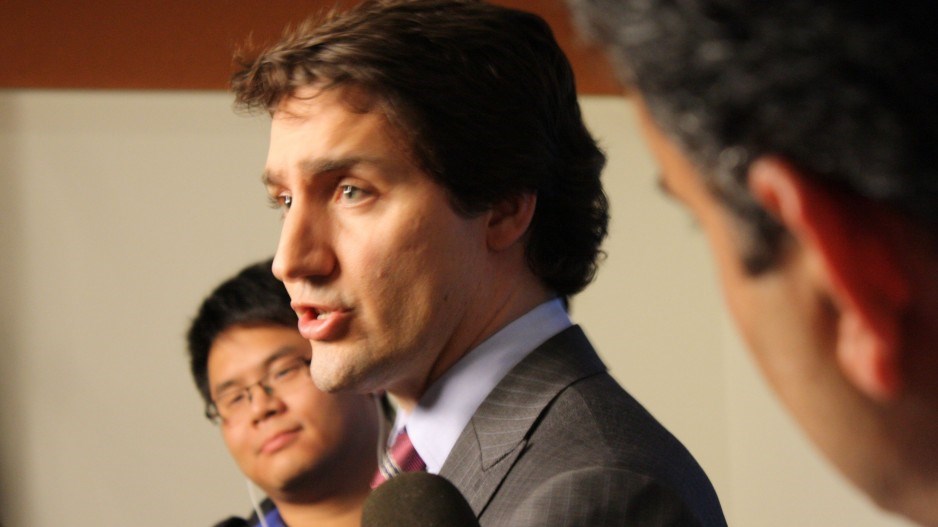Big changes may be in store for the province’s oilpatch with new federal regulations on greenhouse gas emissions (GHGs) in upstream oil and gas, including new power lines to service a spike in electricity demand from producers looking to move away from fossil fuels.
On Tuesday (January 26), Prime Minister Justin Trudeau said his government's overhaul of the National Energy Board would include a process to evaluate the GHGs of proposed energy projects, including during exploration and production.
Trudeau made the comments in Montreal days after Mayor Denis Coderre announced his opposition to TransCanada Corp.'s Energy East project, Bloomberg News reported.
The controversial 4,600-kilometre pipeline would transport Western Canadian oil to refineries in Eastern Canada and a marine terminal in New Brunswick. Trudeau campaigned on a pledge to restore public confidence in the NEB, saying reforms are crucial to getting oil and gas to tidewater.
What those reforms would mean for B.C.'s natural gas industry remains to be seen, but energy lawyer Warren Brazier said they appeared to be a "big deal."
"It seems like they're now looking at the upstream, which has always been overlooked or ignored," said Brazier, associate counsel with Watson Goepel LLP. "So it's definitely a sea change in that respect."
While there are few details on the proposal, taking into account a project's upstream emissions would be a "significant change in the direction of pipeline and National Energy Board reviews," which currently consider project infrastructure.
"It's all about the actual physical infrastructure of the pipeline, and not so much the product of the pipeline," Brazier said.
Energy Minister Rich Coleman told the Alaska Highway News that a new NEB process was unlikely to impact Pacific NorthWest LNG, the perceived frontrunner in the province's race to export liquefied natural gas to Asia.
"That process will continue, but it's also been in process for a thousand days," Coleman said, saying government expected a draft report on the project soon.
"I don't find it intimidating in any way," he added, saying "we've always managed to work these things through" with the federal government.
New emissions regulations could lead to a push to electrify B.C.'s gas fields by plugging processing plants and drilling operations into the BC Hydro grid, which is 93 per cent renewable power. Most oil and gas producers currently burn fossil fuels to power their operations, making the sector responsible for 16 per cent of the province's emissions.
The Dawson Creek and Chetwynd Area Transmission (DCAT) line, completed late last year, was built to cut millions of tonnes of emissions by connecting producers to the W.A.C. Bennett dam, while BC Hydro's proposed Peace Region Electricity Supply could plug into Site C. A third project, proposed by ATCO, would electrify Progress Energy drilling operations in the North Peace. The government has considered expediting the two projects by exempting them from B.C. Utilities Commission review.
Encana Corp. says the DCAT will cut an annual 860,000 tonnes of emissions from their operations in the South Peace, while Progress Energy pegs emission reductions from electrification at 400,000 tonnes a year. That could spur additional demand for independent power producers, including wind farms, as well as the Site C dam, Brazier said.
Emissions standards could also give B.C. a competitive advantage over Alberta, which is dependent on coal and natural gas to power its grid. Other jurisdictions already have large-scale electrification, including the Bakken Shale in North Dakota.
"If you look at electrification in B.C. versus electrification in other jurisdictions, B.C. would by far have an advantage to using electricity," Brazier said, noting it would make for smaller carbon tax payments.
He said electrification might make sense for producers in the long run.
"If B.C. has the amount of gas it says it has—150 years (worth), a quadrilion cubic feet—that lends itself to building permanent infrastructure," he said.




